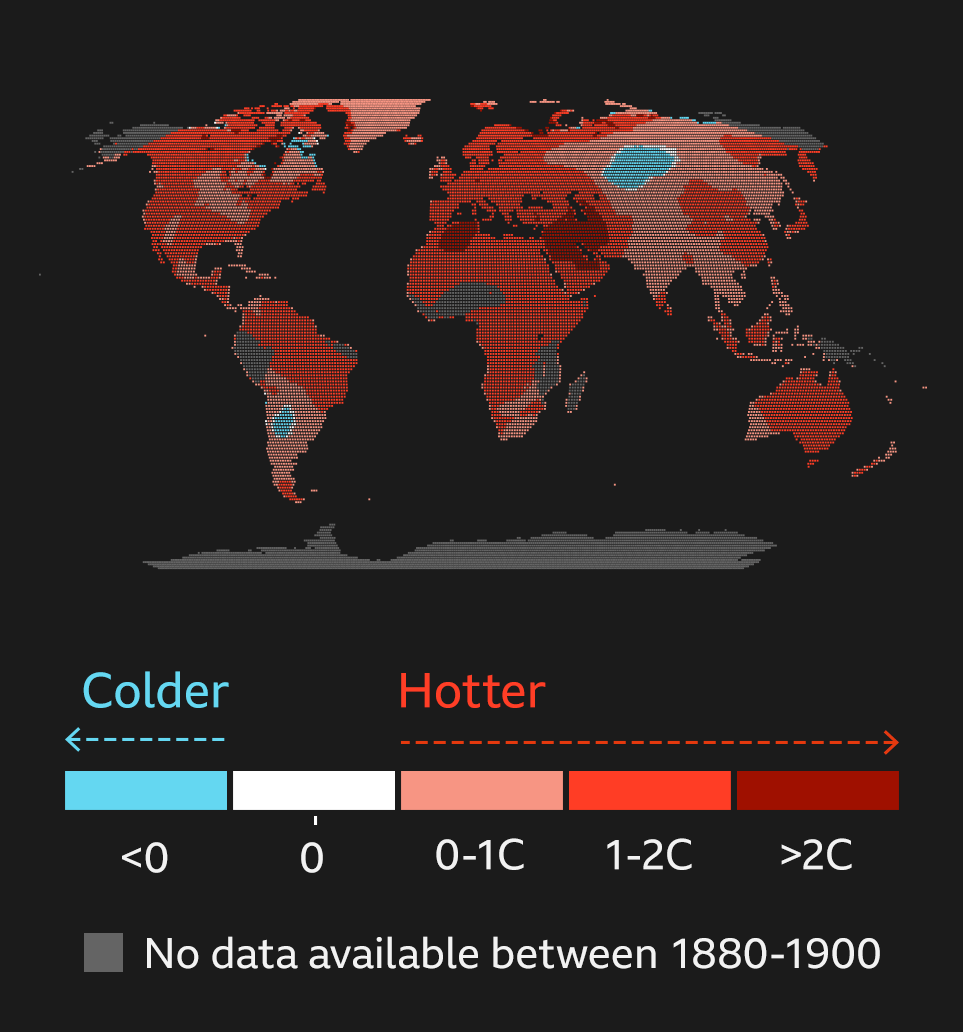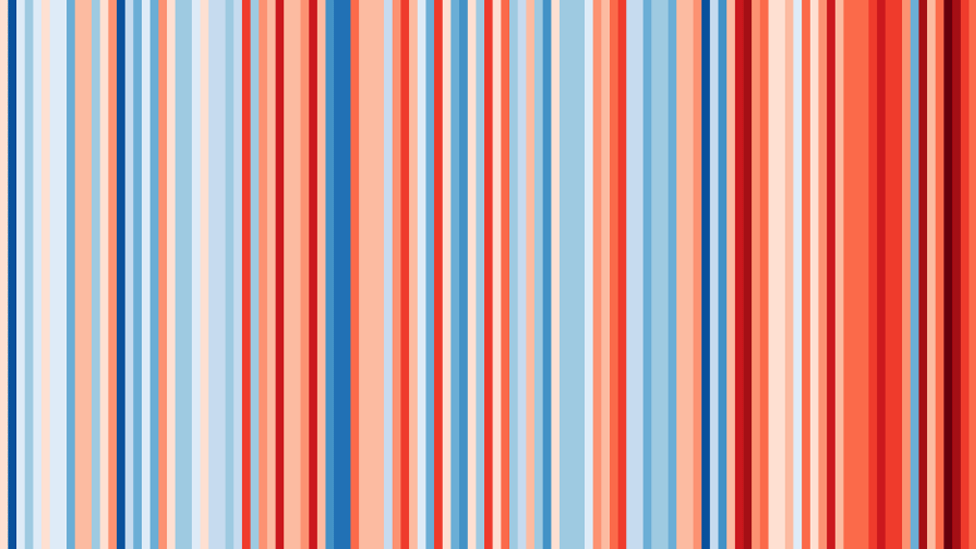How much warmer is your city?
The world is getting hotter. July 2019 was one of the warmest months ever recorded - and July temperatures almost everywhere on Earth have been higher in the last 10 years compared with 1880-1900, as this globe shows. Scroll below to find out how the temperature in 1,000 major cities across the world has changed already and how much it could increase by in the coming years.

Scientists have warned we must limit global temperature rise to 1.5 degrees to avoid the worst impacts of climate change. That's compared to the temperatures in 1850-1900, before widespread industrialisation.
The earth has already warmed about 1C since then.
That may not sound like much, but if countries don't act to limit warming, our world could face "catastrophic change", according to the leading international body on global warming, the IPCC.
Sea levels will rise, risking the displacement of hundreds of millions of people. We'll also face more extreme weather such as droughts, heatwaves and heavy rains, and our ability to grow crops like rice, maize and wheat would be in danger.
If global warming continues at today's rate, temperatures may rise by 3-5C by the end of the century.
Find out how much the area around your city has already warmed - and what may lie ahead.

Please update your browser to see this interactive
Let's simplify that a bit. This line shows the 10-year rolling average for each month. The latest average {{startHighlight}}{{jul}}July{{endHighlight}} temperature in {{city}} was {{startHighlight}}{{rolling_avg_2018_jul}}C{{endHighlight}}. The {{startHighlight}}{{jan}}January{{endHighlight}} temperature was {{startHighlight}}{{rolling_avg_2018_jan}}C{{endHighlight}}. But what will temperatures be like by 2100?
January: {{temp}}C ({{diff}} from 1900)
July: {{temp}}C ({{diff}} from 1900)
Greenhouse gas emissions need to peak in the early part of the century and then see a drastic reduction. This aims to keep global temperature rise below 2C, and requires stringent climate policies to limit emissions.
January: {{temp}}C ({{diff}} from 1900)
July: {{temp}}C ({{diff}} from 1900)
Emissions peak by 2040 and then decline. This is in line with many political targets designed to tackle climate change.
January: {{temp}}C ({{diff}} from 1900)
July: {{temp}}C ({{diff}} from 1900)
This is similar in some respects to the medium-low scenario, but greenhouse gases don't start declining until around 2080.
January: {{temp}}C ({{diff}} from 1900)
July: {{temp}}C ({{diff}} from 1900)
This is a worst-case scenario in which emissions continue unchecked throughout the 21st century. Globally, it could lead to a temperature rise of between nearly 3 and 5C by 2100.
Which of these scenarios is closest to the reality of 2100 will depend on the action countries across the globe take. Temperatures could be even higher or lower depending on how the atmosphere reacts to new levels of CO2 in the future.
What could this lead to?

With a population of more than eight million, New York is one of the biggest cities in the world. But the city is vulnerable to coastal flooding and storm surges, such as the one that accompanied Hurricane Sandy from October to November 2012. Sandy flooded the subway and road tunnels entering Manhattan, caused blackouts and led to the deaths of more than 50 people.
Climate change is expected to lead to more intense hurricanes that dump more water. It is also causing sea level rise. New York's coastal location, with almost 1,500km of shoreline, makes it extremely vulnerable to these climate-driven impacts. The US emergency agency has projected that by the middle of this century, a quarter of the city - home to nearly a million people - will lie in flood zones.

The Arctic is highly sensitive to the effects of climate change, and is warming twice as fast as the rest of the world. It's thus seen as a canary in the coal mine for the impacts of global warming.
Like other regions of the world, the Arctic is seeing a rise in air and water temperatures. But the Arctic Ocean is covered in sea ice that melts in the summer and freezes again in the winter. In recent decades, that ice has been melting faster than it re-freezes in winter, causing it to decline. This is contributing to the large temperature change in the Arctic compared with the rest of the world.

The Indonesian capital, home to 10 million people, is one of the fastest sinking cities in the world. The northern part of the city is sinking at a rate of 25cm a year in some areas. The dramatic rate is due to a combination of excessive groundwater extraction causing subsidence and sea level rise caused by climate change. A 32km sea wall and 17 artificial islands are being built to protect the city at a cost of $40bn.
But experts say this is just an interim measure. They argue that all groundwater extraction needs to stop by 2050, with the city learning to rely on other sources of water piped from reservoirs. But sea level rise will remain as a challenge, as it does for other coastal cities. The rise is because of thermal expansion - the water expanding because of extra heat - and the melting of polar ice.

 Climate change food calculator: What's your diet's carbon footprint?
Climate change food calculator: What's your diet's carbon footprint?
 Is this the simplest way to show what is meant by global warming?
Is this the simplest way to show what is meant by global warming?
 Climate change: Where we are in seven charts and what you can do
Climate change: Where we are in seven charts and what you can do